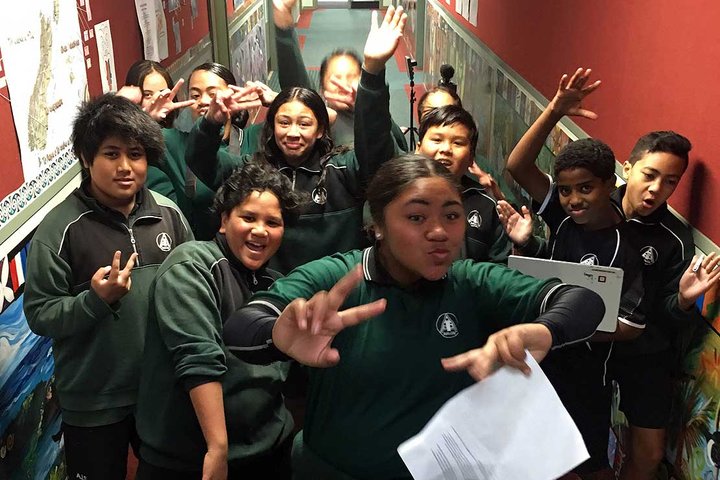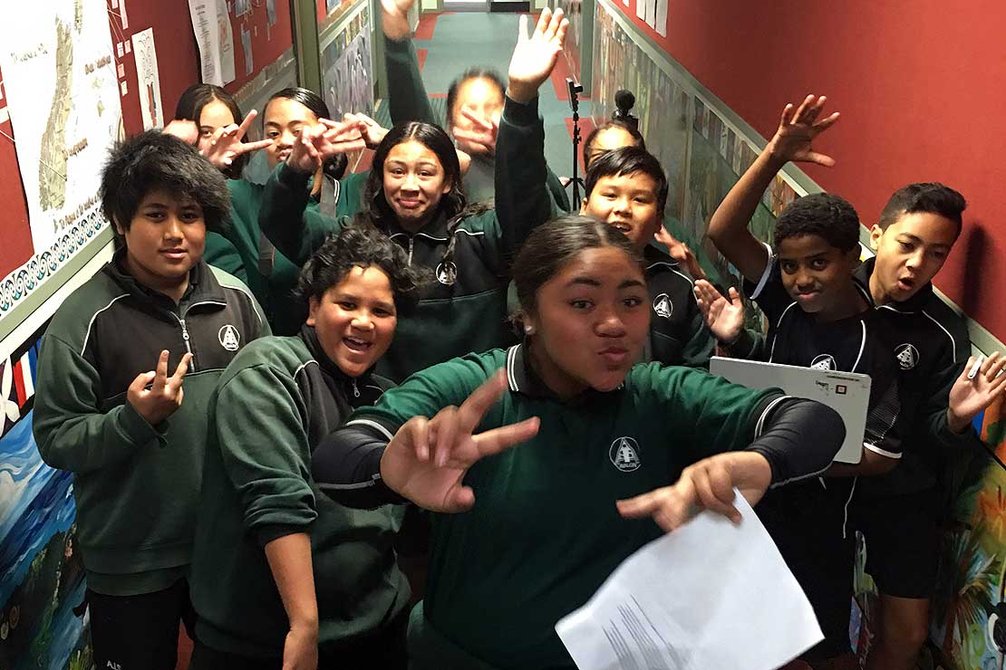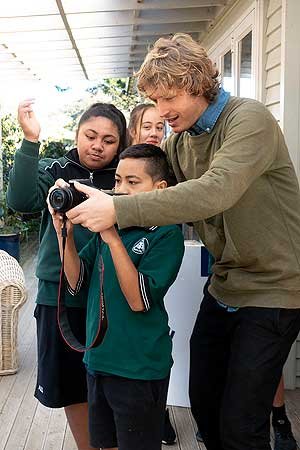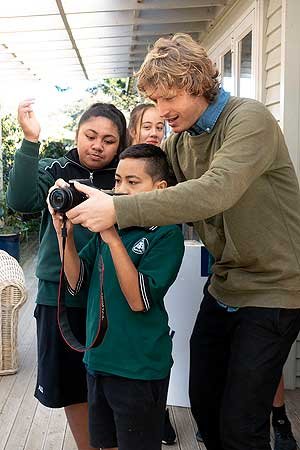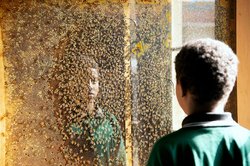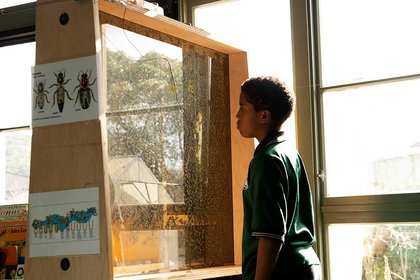
The Apiscope at Avalon Intermediate School.
An observational classroom beehive at Avalon Intermediate School has inspired students to turn their learnings into music and poetry.
Massey University researchers Professor Anne Noble and Associate Professor Tracy Riley have been working with students and teachers at the school in the first New Zealand research project of its kind.
Over the last two school terms, students have been working with Massey music, photography and educational specialists to create an album of songs, an illustrated lyrics book, music videos and a documentary reflecting on what they have learned through observing the bees in their classroom Apiscope (observation hive).
The Apiscope Buzz project uses observational processes for learning about bees and the life of the colony, with students using creative arts to express their scientific knowledge. A local beekeeper has been working with the students to help with fact-checking and development of understandings.
The students’ album, Yellow Black Nation, was recorded with Massey University music lecturer and artist Warren Maxwell and graduates of the School of Music. Students worked with teacher and music video education expert Paascalino Schaller on videos for the songs, and Professor Noble and Massey photography graduate Chevron Hassett to create and illustrate a lyrics book with their own photographs. The songs express their learning about bees, and messages about conservation, sustainability and the importance of bees to our world.
Professor Noble and Dr Riley are researching STEM (Science, Technology, Engineering & Mathematics) to STEAM (with addition of the arts) learning, through observation-led teaching and expressed through the creative arts, for intermediate aged “at-risk” students, and developing innovative, differentiated teaching and learning.
Professor Noble says Apiscope Buzz is an example of how the observational study of a living system applied with the creative arts can be a means for students to express their learning across multiple disciplines.
“Bringing together professional artists to work with the students and teachers has enabled authentic, relevant learning and teaching. It's a kind of transdisciplinary learning model where we place art as central to the expression of learning – STEM to STEAM.
“I think what you see really clearly in this project, which is marvellous, is the high degree of literacy and enthusiasm for learning that is difficult to measure through standard assessment methods. It just is an eye-opener.”
Dr Riley says it’s exciting to see the students engaged in learning. “It has enabled a group of learners to develop and learn from their strengths and experiences as Māori and Pacific kids through tailoring teaching to meet individual needs.
“The kids have been able to really transform high-level scientific information about bees into an amazing artistic product,” she says. “For me, as a teacher educator, it's really highlighted the critical role that teachers play in differentiation – in responding to individual’s learning abilities.”
Mr Schaller says the success of engaging students comes back to the “curiosity of the individual”.
“If they're curious about something, they'll want to learn and find out more about what they're learning. I was always curious when I was engaging with something that I could relate to, which for me was the music, and being so engaged with something in that moment that all your senses are fully awake.
“That's the point where I want to get those kids to. The moment where they're so in that moment of whatever they're doing, that when they reflect upon that moment they have a really positive reflection of that learning. That stimulates their curiosity and develops their creativity, and that's where the arts come in massively.”
Their research has found that the students are demonstrating scientific literacy and understanding of larger environmental concepts in their expressive lyrics, which are developed to be spoken or sung.
Professor Noble says these modes of expression of learning are not captured by traditional demonstrations of student learning. “Although not the focus of this study, this project raises further questions about standard assessment processes that may well disadvantage some learners at this level.”
Professor Noble and Dr Riley began the project in 2016 through a relationship with physicist Dr Jean-Pierre Martin at the University of Orléans. “Dr Martin was really interested in supporting us to establish a pilot project where we could see the benefits of observational learning around a living system, around a colony of bees in New Zealand classrooms,” Professor Noble says.
The New Zealand Apiscope is an adaptation of a French version of the classroom Apiscope, designed with the French company Abeille Etc… as an affordable, safe and environmentally friendly observational beehive to support curiosity-led learning about a complex living system within a school classroom
Professor Noble and Dr Riley are also working with Newlands Intermediate School, where students are writing and illustrating a series of books about bees, working with a Massey illustrator and writer.
The research is supported by a fund from the New Zealand Council for Educational Research Teaching and Learning Research Initiative.
